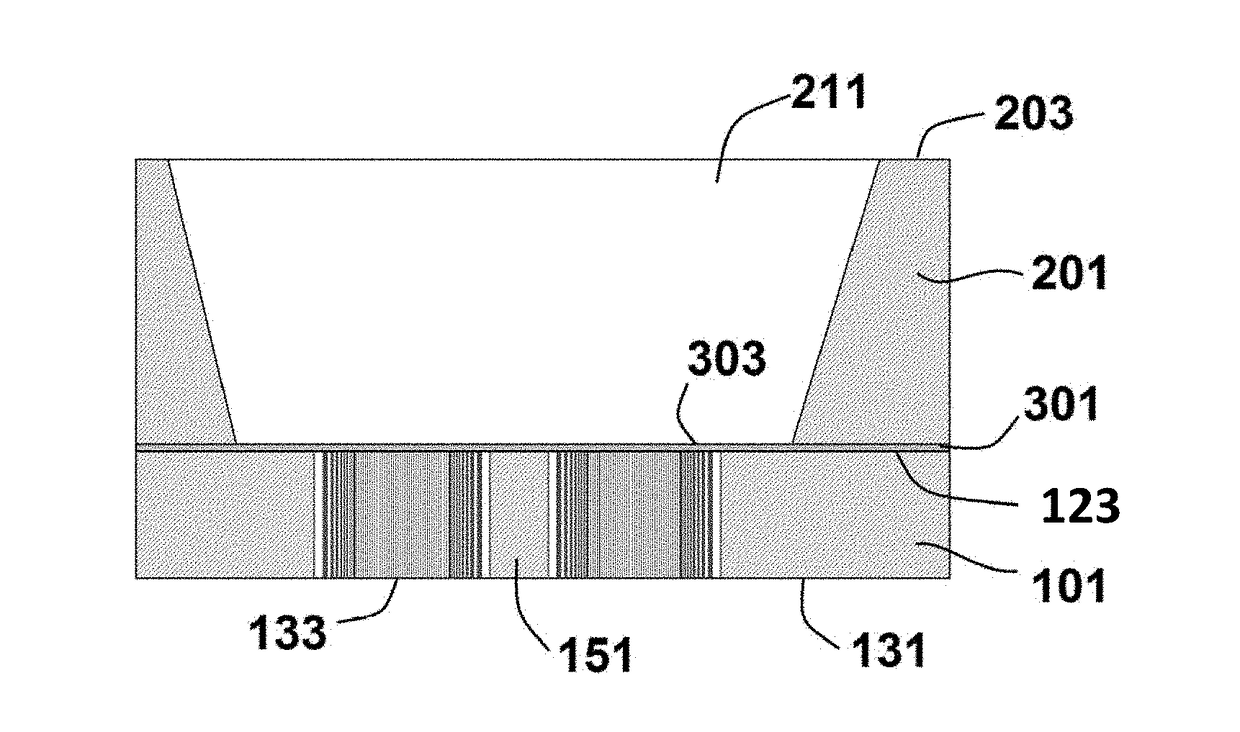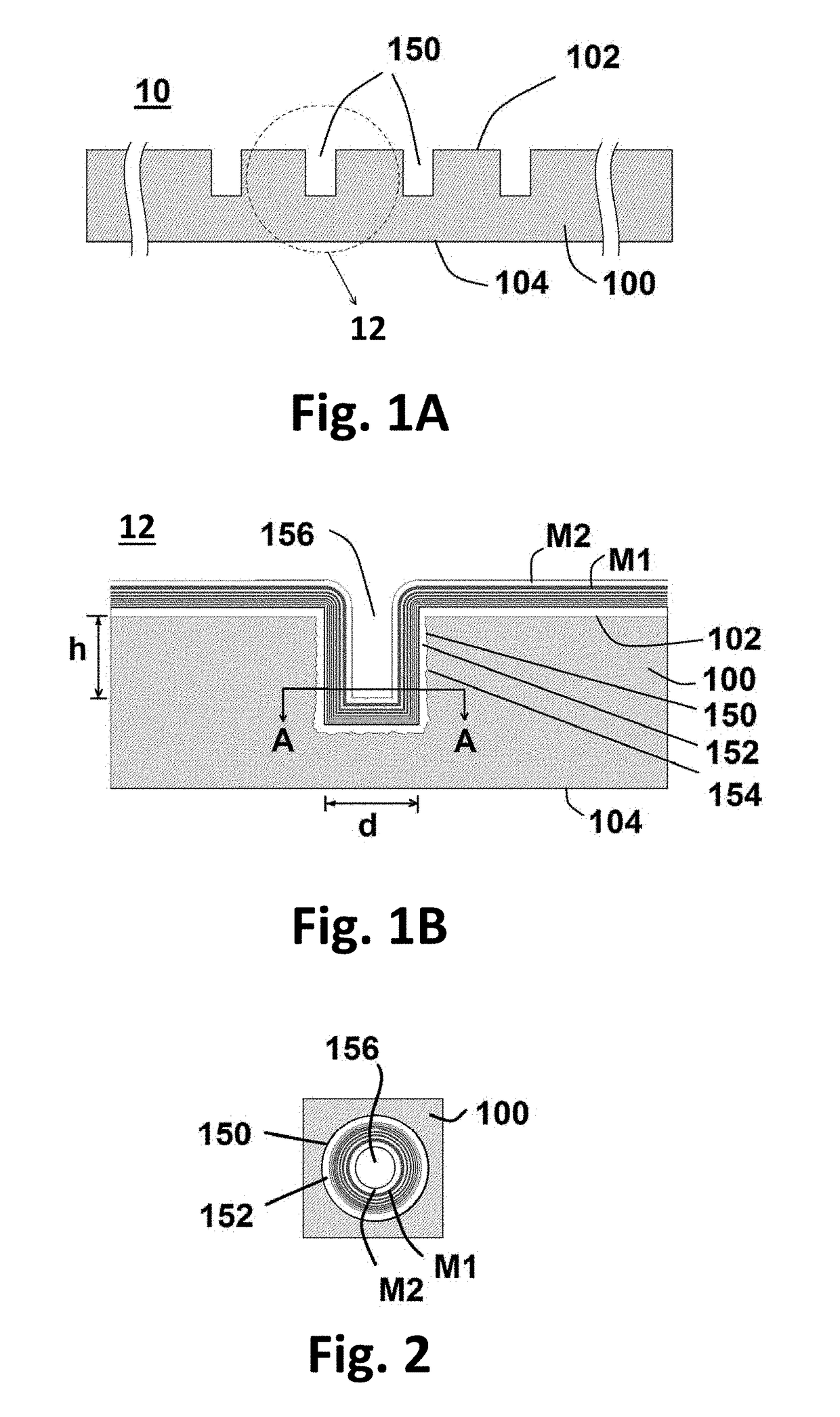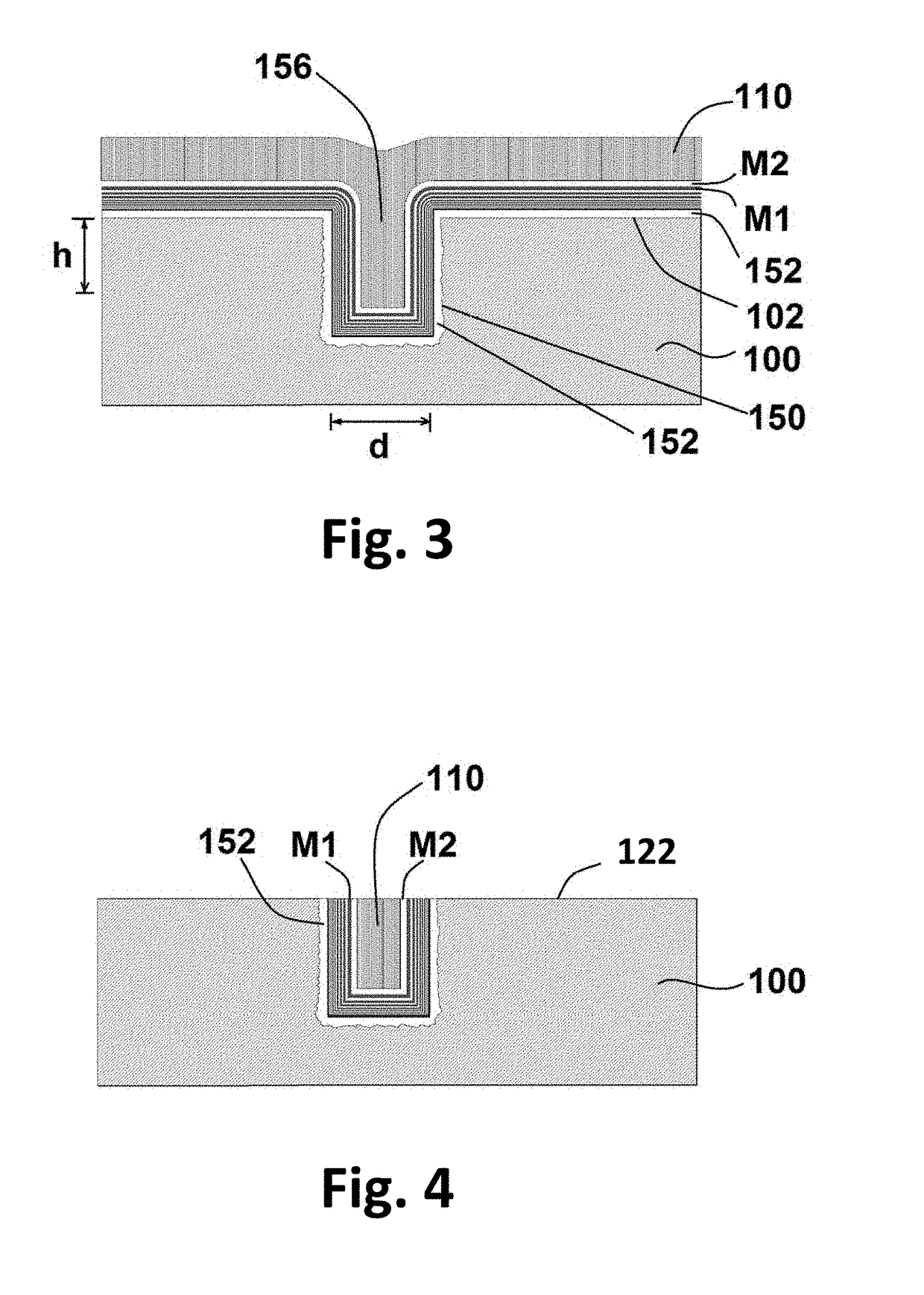Batch-processing method for super-high aspect ratio diffractive optics
a diffractive optic and super-high aspect ratio technology, applied in the field of batch processing of high-aspect ratio diffractive optic devices, can solve the problems of insufficient x-ray or particle beam focusing efficiency, the modest aspect ratio of the features that all these types of lithography and methods are capable of producing, and the inability to manufacture self-standing geometric objects of this aspect ratio without collapse or distortion, etc., to achieve the effect of reducing the cost of production
- Summary
- Abstract
- Description
- Claims
- Application Information
AI Technical Summary
Benefits of technology
Problems solved by technology
Method used
Image
Examples
first embodiment
[0084]FIGS. 1A and 1B and FIGS. 2 to 7 illustrate schematically steps in a method of fabricating a device structure comprising a high aspect ratio diffractive optic comprising a Fresnel Zone Plate (FZP). The resulting device structure is shown in FIG. 7.
[0085]FIG. 1A shows a schematic cross-sectional view part of a precursor device structure 10 comprising an array of cylindrical holes 150 defined in a planar substrate 100. The planar substrate comprises, for example a silicon wafer having a smooth polished planar front surface 102 and back surface 104. FIG. 1B shows an enlarged view of part 12 of FIG. 1A, comprising one of the array of cylindrical holes 150, after deposition of a planarization layer 152 and a sequence of conformal layers comprising a first material M1 and a second material M2 have been deposited in the cylindrical hole. As illustrated schematically, there are alternating layers of M1 and M2. The electromagnetic properties of each of first and second materials M1 an...
fourth embodiment
[0119]Thus, FIG. 17A shows a schematic cross-sectional view of a multiple-phase diffractive optics device of a fourth embodiment, comprising a FZP for hard X-rays, using multiple layers (N) stacks of materials M1, M2, . . . MN. FIG. 16B illustrates the resulting N-steps phase shift approximation corresponding to an ideal continuous-varying phase shift in a kinoform as shown in FIG. 16C. Thus, it will be appreciated that the method can be readily generalized for multilayer stacks of ALD films, M1, M2, . . . MN, to approach a smooth variation of absorbance of phase shifting across Fresnel zones, for an increase in efficiency and elimination of unwanted focusing / diffraction orders.
[0120]In the device structures of the embodiments described in detail above, the diffractive optics comprise diffractive line patterns in the form of concentric circular zones, formed within a cylindrical hole or around a cylindrical column or post. By providing a precursor structure or form comprising a plan...
second embodiment
[0125]For example, for a two dimensional diffractive optic, if the precursor form 30 comprises an array of cylindrical columns 351 of the appropriate dimensions for forming FZP similar to those of the second embodiment, the columns in holes are structured for forming arrays of zone plates with at least a minimum distance between them. That is, while the precursor form illustrated in FIG. 8A has one cylindrical column in each cylindrical hole, the precursor form as illustrated in FIG. 18, for forming a two dimensional diffractive optic, comprises a group of a plurality of cylindrical columns 351 formed within each cylindrical hole 350, with islands 352 of the substrate surrounding each hole. The larger islands 352 or reinforcing regions of the substrate around groups of columns provide a more robust substrate structure during fabrication, and e.g. to provide areas of the planar substrate surface that act as a polish stop layer for the chemical-mechanical polishing steps.
[0126]For for...
PUM
| Property | Measurement | Unit |
|---|---|---|
| energy | aaaaa | aaaaa |
| diameter | aaaaa | aaaaa |
| angle | aaaaa | aaaaa |
Abstract
Description
Claims
Application Information
 Login to View More
Login to View More - R&D
- Intellectual Property
- Life Sciences
- Materials
- Tech Scout
- Unparalleled Data Quality
- Higher Quality Content
- 60% Fewer Hallucinations
Browse by: Latest US Patents, China's latest patents, Technical Efficacy Thesaurus, Application Domain, Technology Topic, Popular Technical Reports.
© 2025 PatSnap. All rights reserved.Legal|Privacy policy|Modern Slavery Act Transparency Statement|Sitemap|About US| Contact US: help@patsnap.com



